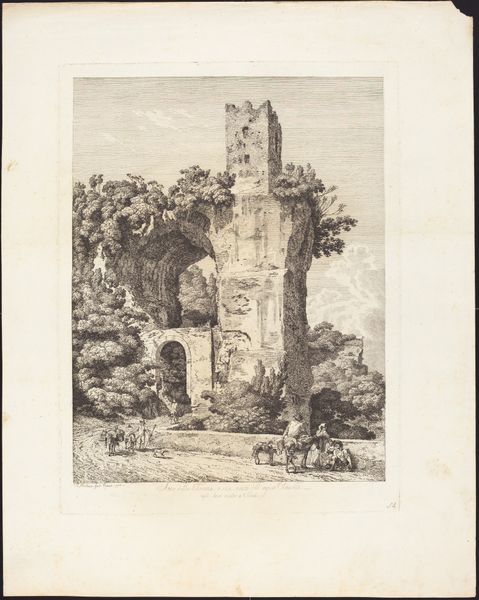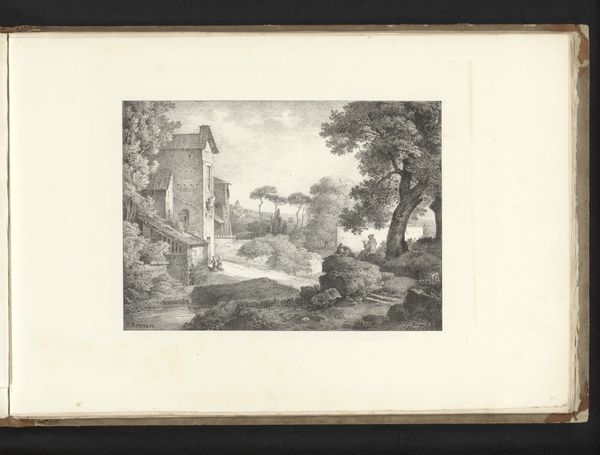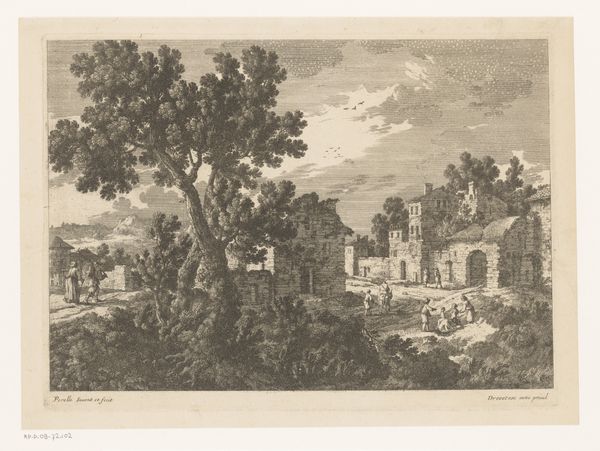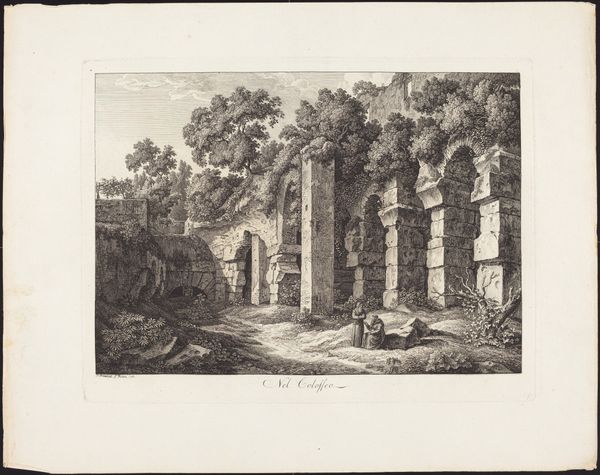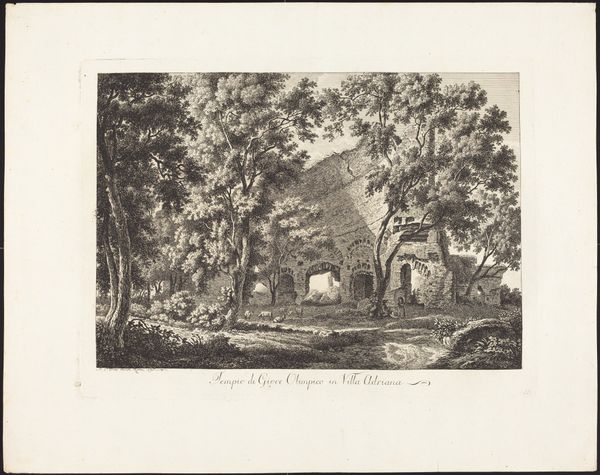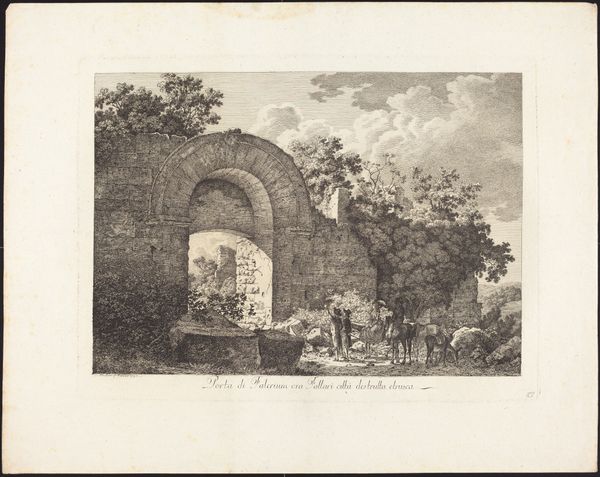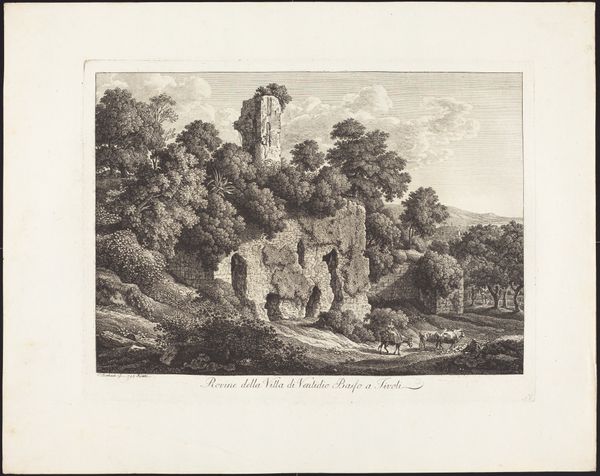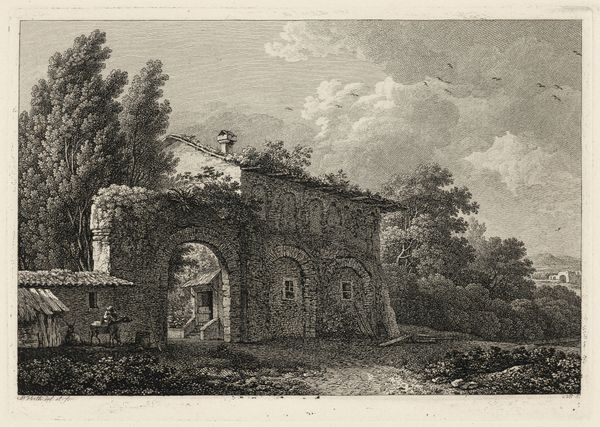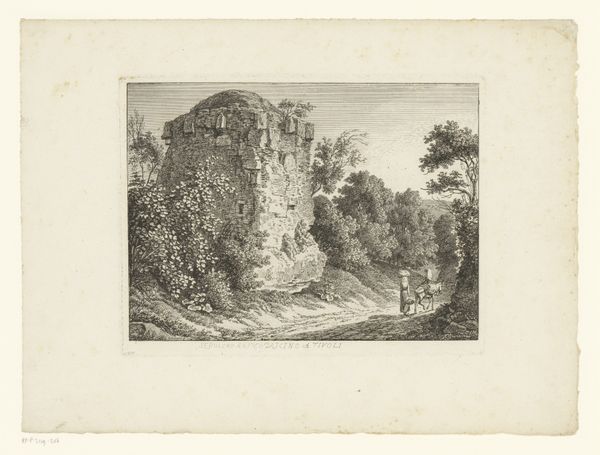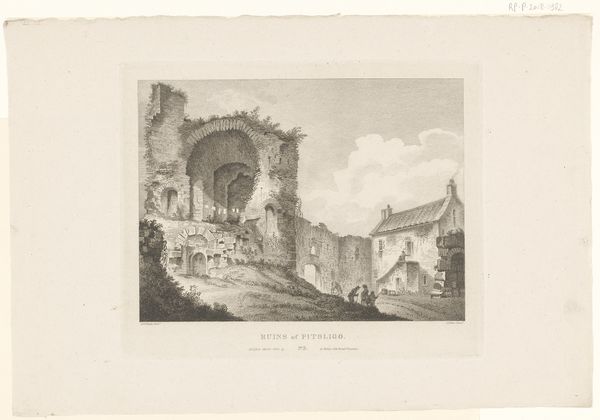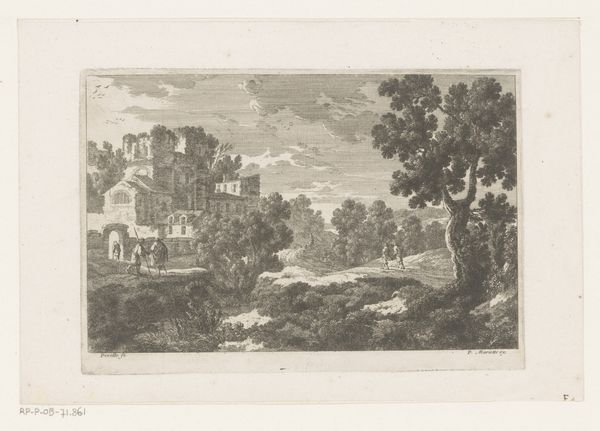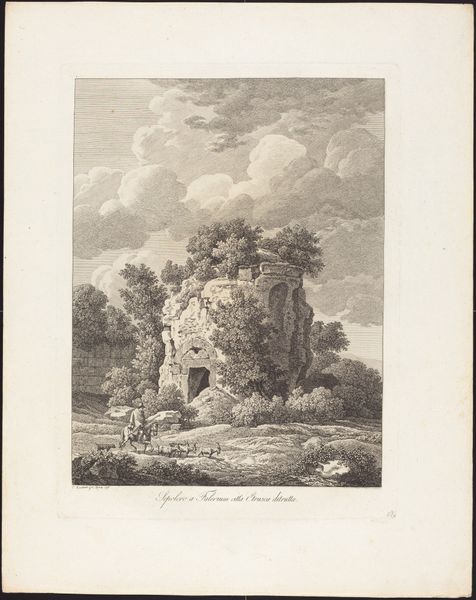
print, etching, engraving, architecture
#
neoclacissism
# print
#
etching
#
landscape
#
engraving
#
architecture
Dimensions: plate: 28 x 38 cm (11 x 14 15/16 in.) sheet: 39.1 x 49 cm (15 3/8 x 19 5/16 in.)
Copyright: National Gallery of Art: CC0 1.0
Curator: This delicate print captures the essence of Johann Christian Reinhart's neoclassicism. Created in 1798, it’s entitled "Avanzi della Bibliotheca in Villa Adriana," depicting the ruins of the library at Hadrian's Villa. Editor: It's melancholy, isn’t it? Ruins always feel that way to me – beautiful decay, like nature reclaiming what we thought was permanent. Curator: Absolutely. The crumbling architecture juxtaposed with the lush, enveloping landscape speaks to the ephemeral nature of human ambition, a key theme within neoclassicism, which sought to revisit grand, lost eras. This is etching and engraving at its finest. Consider, though, the implications of ‘ruin’ itself – a marker not just of lost glory, but of the societal structures that created it. Editor: It’s interesting that Reinhart focused on this angle of the ruins, though. Notice the lone figures down below near the treeline – dwarfed, completely. Maybe he's thinking about how tiny we all are against time's grand sweep? Gives you this peculiar sensation, a sort of melancholic wonder, don't you think? Curator: Yes, that diminutive human presence truly reinforces the work's overarching themes of mortality and impermanence, particularly in relation to empires and systems of knowledge. His composition leads your eye carefully around the scene. Consider the contrast between the wildness of the overgrowth and the formal Roman structure that peaks from beneath it. Editor: The wildness of the vegetation and how it intertwines! It reminds me of those hidden grottos where time ceases to exist – you can almost hear the rustling leaves, feel the damp stone…I want to walk in there and unearth ancient truths and then write a book about it. Or a song! It all feels so pregnant with forgotten meanings, don’t you agree? Curator: Very much so. And beyond aesthetics, it opens paths into exploring power structures reflected in its construction, loss, and rediscovery. In essence, it encapsulates a visual conversation between history, nature, and human existence, which prompts important questions concerning societal growth, dissolution, and the narratives that are preserved or eradicated over time. Editor: Reinhart invites a powerful feeling. You can hear history breathing down your neck…makes you want to listen to its whisper. It’s beautiful, profound, and kind of haunted all at once.
Comments
No comments
Be the first to comment and join the conversation on the ultimate creative platform.

